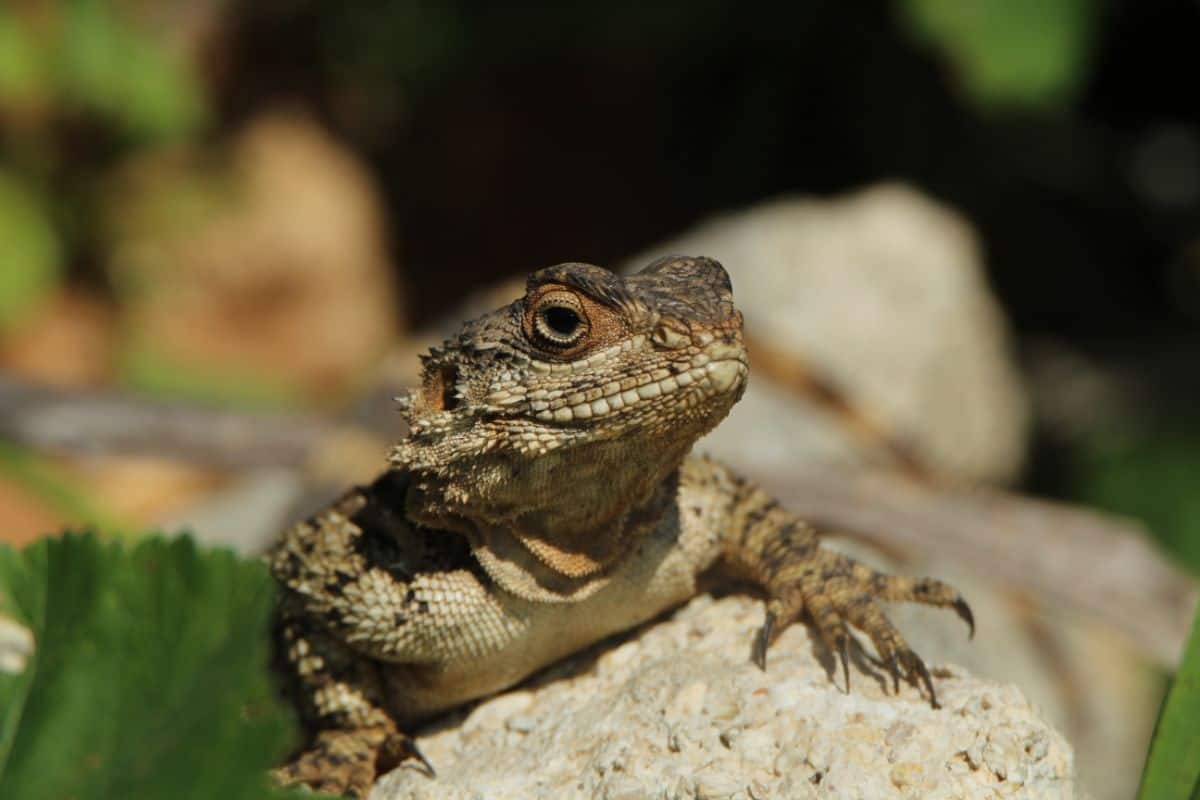
Reptiles and succulents go together like peanut butter and jelly. With bio-active vivariums becoming more popular amongst lizard-lovers and other scale-sniffers, live plants and herps are coming in contact in captivity more than ever.
It's important to make sure that you're matching your reptile with plants that won't harm them. While most succulents aren't poisonous to reptiles, a few can be. That's why we made this list of plants that you can count on to keep your reptilian overlord, *cough*, pet safe.
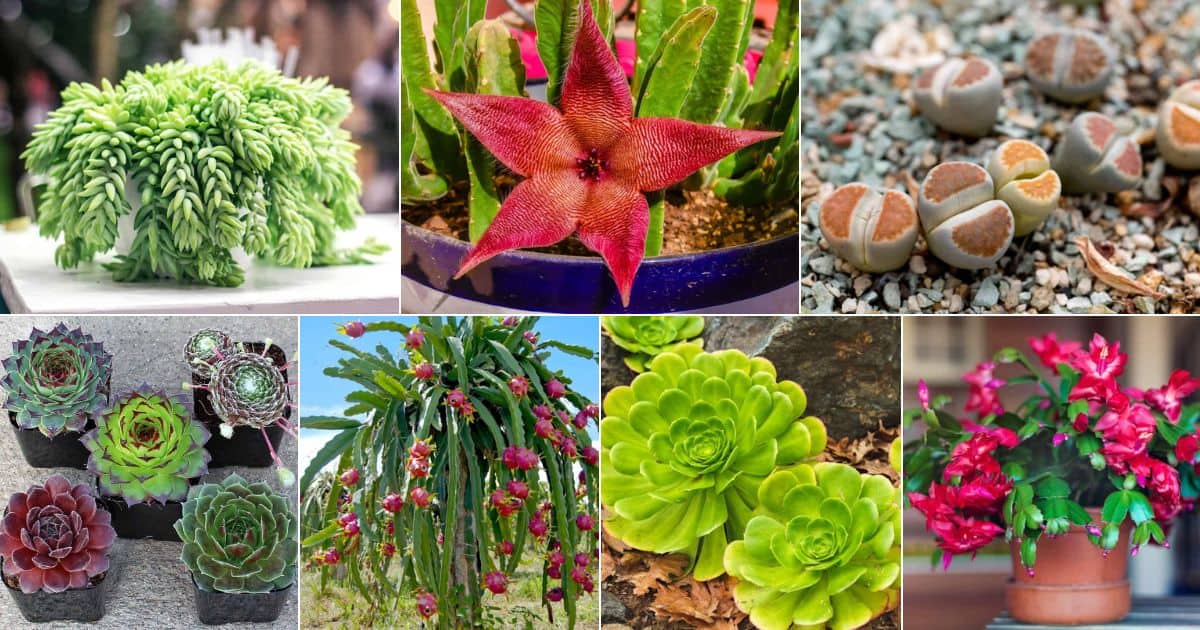
These plants are all non-toxic to reptiles in the case of an errant munch. Furthermore, none have particularly pointy spines so your pet will be protected from physical damage too. We've described the care for each succulent - it's up to you to decide if it fits with the humidity and light needs of your reptile!
Read Also: Gift Guide for the Succulent Obsessed
Jump to:
1. Aeonium
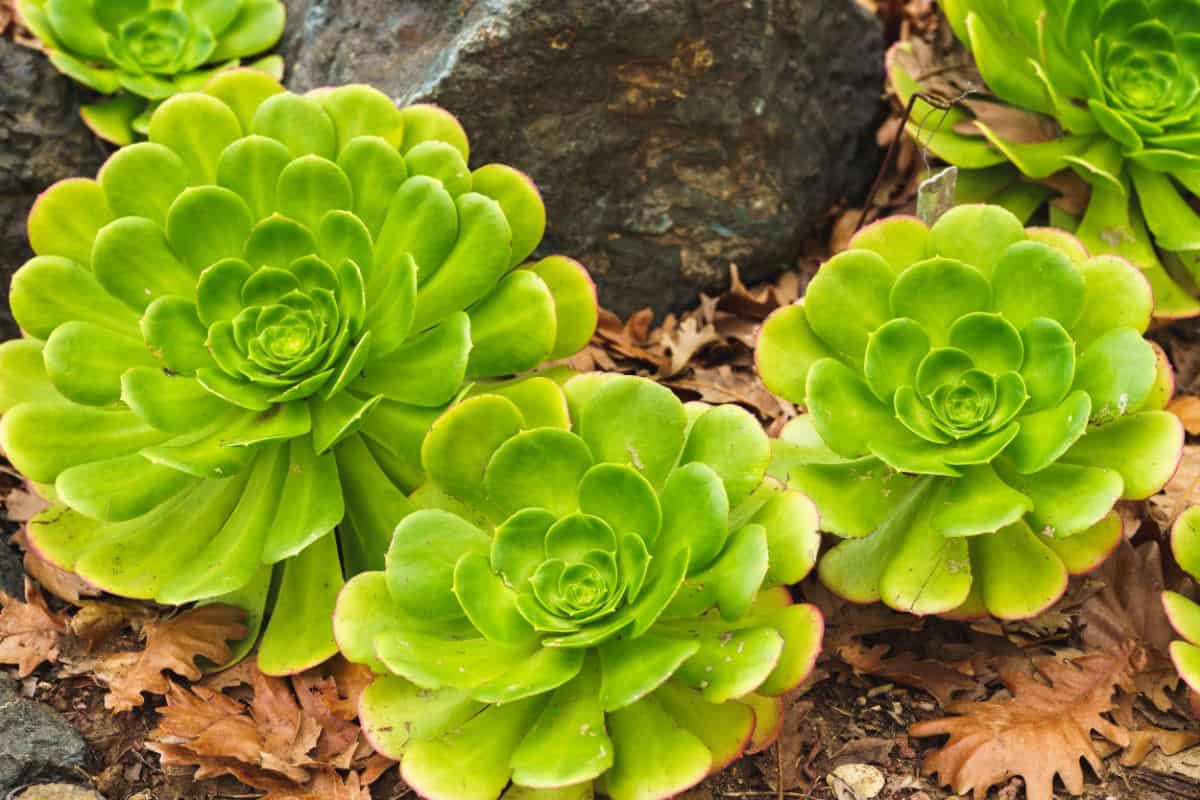
Buy it from:
Depending on the specific variety, these beautiful succulents vary in size. They range from just a few inches to roughly three feet tall. There are about 35 different varieties of Aeonium, which are available in colors ranging from green with yellow variegation to a deep burgundy-black.
Read Also: 10 Rare Succulents (and Where to Find Them!)
Aeonium prefer either full sun or partial shade and are hardy to temperatures just below freezing. When propagating, they do best with stem cuttings. Aeonium are easy to care for and are perfect for both experienced and beginner snake-loving gardeners alike.
2. Schlumbergera
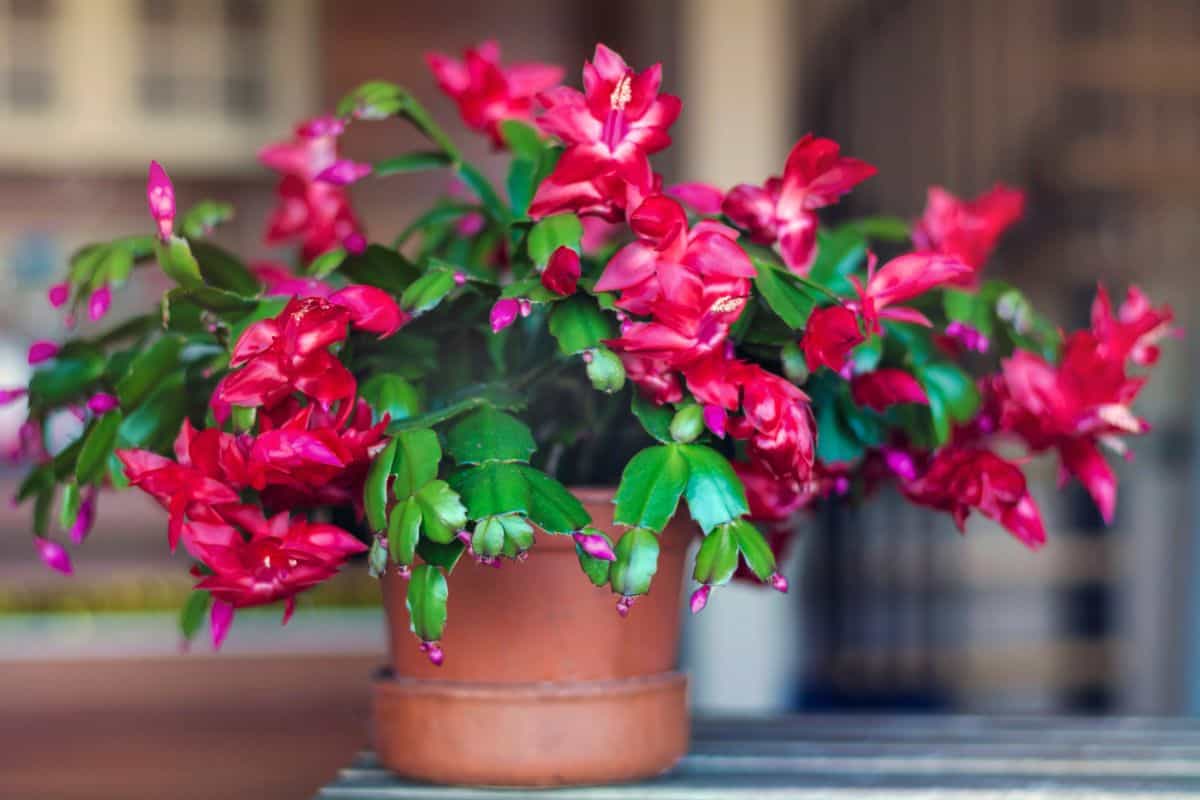
Buy it from:
Also known as the Holiday Cactus, this beautiful plant is an excellent choice for any reptile-friendly home or tank. They are incredibly hardy and easy to care for. Their stems, which consist of leaf-like pads, can grow quite long and look lovely in hanging planters. The time of year at which the plant blooms and the color of the flowers will depend on the specific variety.
Plants from the Schlumbergera genus prefer filtered light and thorough watering when their soil is dry. They are hardy to around 40 degrees Fahrenheit. They're apparently quite tasty too, so don't be surprised if it's eaten.
Read Related Reading: 11 Succulents Safe for Cats
3. Haworthia
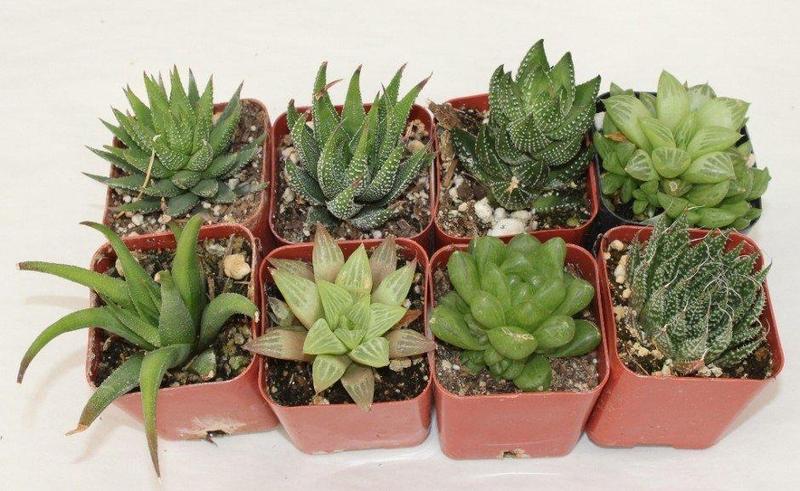
Buy it from:
Haworthia are ideal succulents for indoor settings because they thrive in low light conditions. There are so many varieties of the plant you're sure to find the perfect addition to your tank or windowsill collection. They are available in a wide variety of colors, shapes, sizes so no matter what type of enclosure you have, there's a Haworthia for you.
Read Related Topic: 11 Non-Toxic Succulents Safe for Dogs
These unique-looking succulents need partial shade or indirect light. They do best with well-draining soil and infrequent watering. They are easy to propagate and can be grown from either leaf cuttings or pups.
4. Echeveria
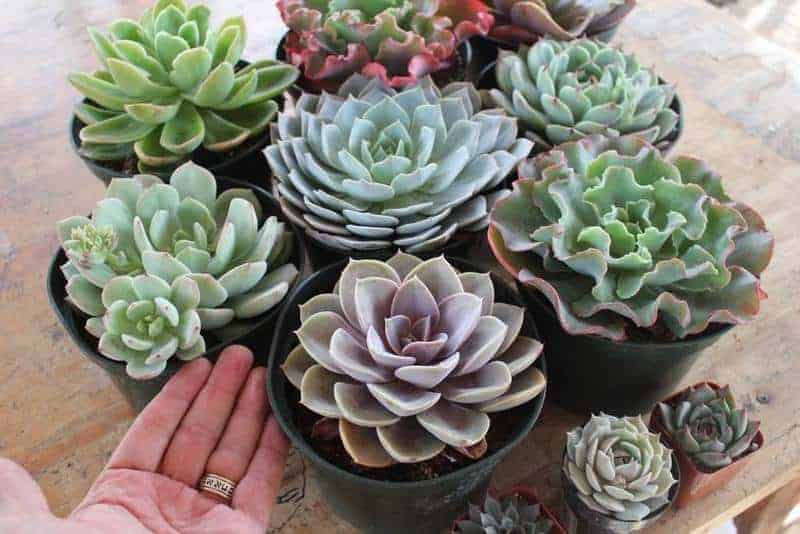
Buy it from:
Echeveria are popular with experienced and beginner gardeners alike. It's no surprise considering how easy they are to care for and propagate. Their beautiful rosettes come in a wide variety of colors and are completely non-toxic to pretty much every animal.
No products found.
These elegant succulents love to be in full sun and will thrive in most conditions, even with a little neglect. They can be propagated by trimming off either a pup or an individual leaf. To get the pretty colors, you'll need lots of light.
5. Stapelia
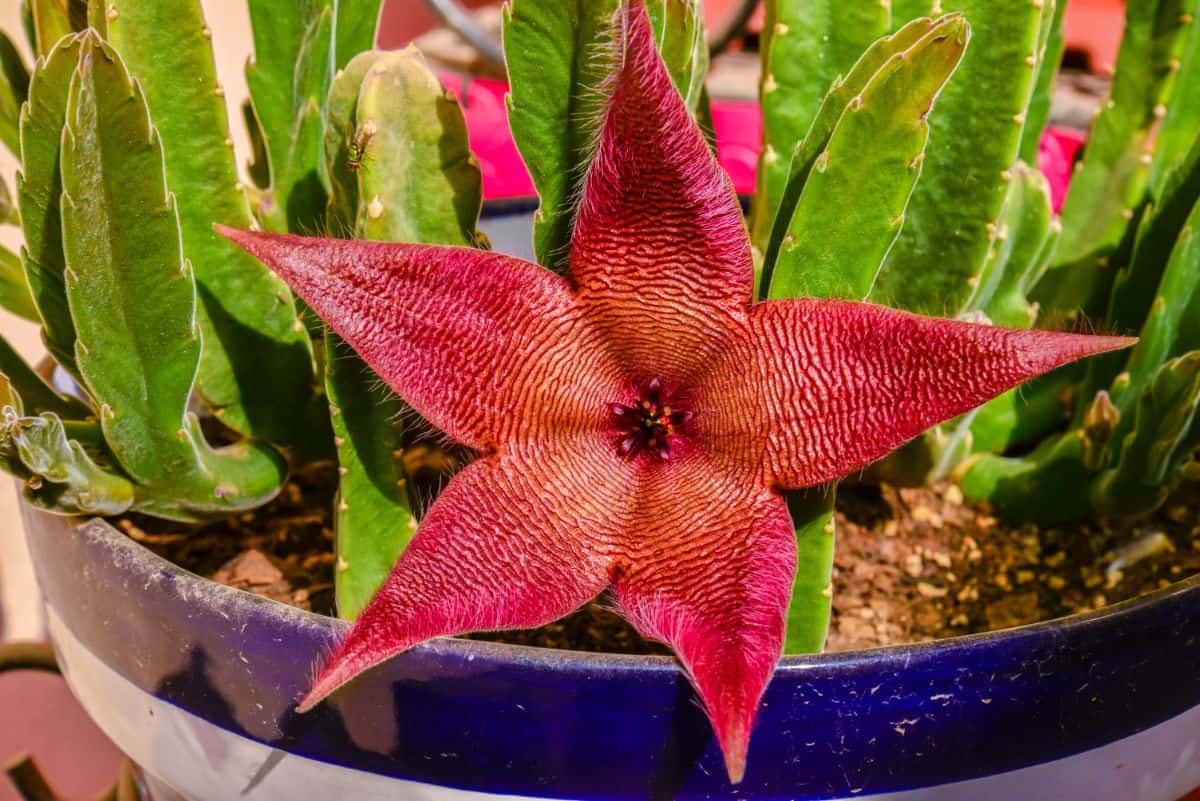
Buy it from:
Stapelia are a unique little cactus known for their starfish-shaped flowers. Their unique, striped flowers can be red, purple, or yellow depending on the specific variety. Some varieties have sweet-scented flowers, while other produce a more putrid odor, so choose carefully when planting indoors. They make interesting additions to reptile tanks, especially while in bloom.
Stapelia prefer partial sun or light shade. They do not tolerate frost and must be protected in temperatures lower than 50 degrees Fahrenheit. They are relatively easy to propagate using cuttings.
6. x Pachyveria
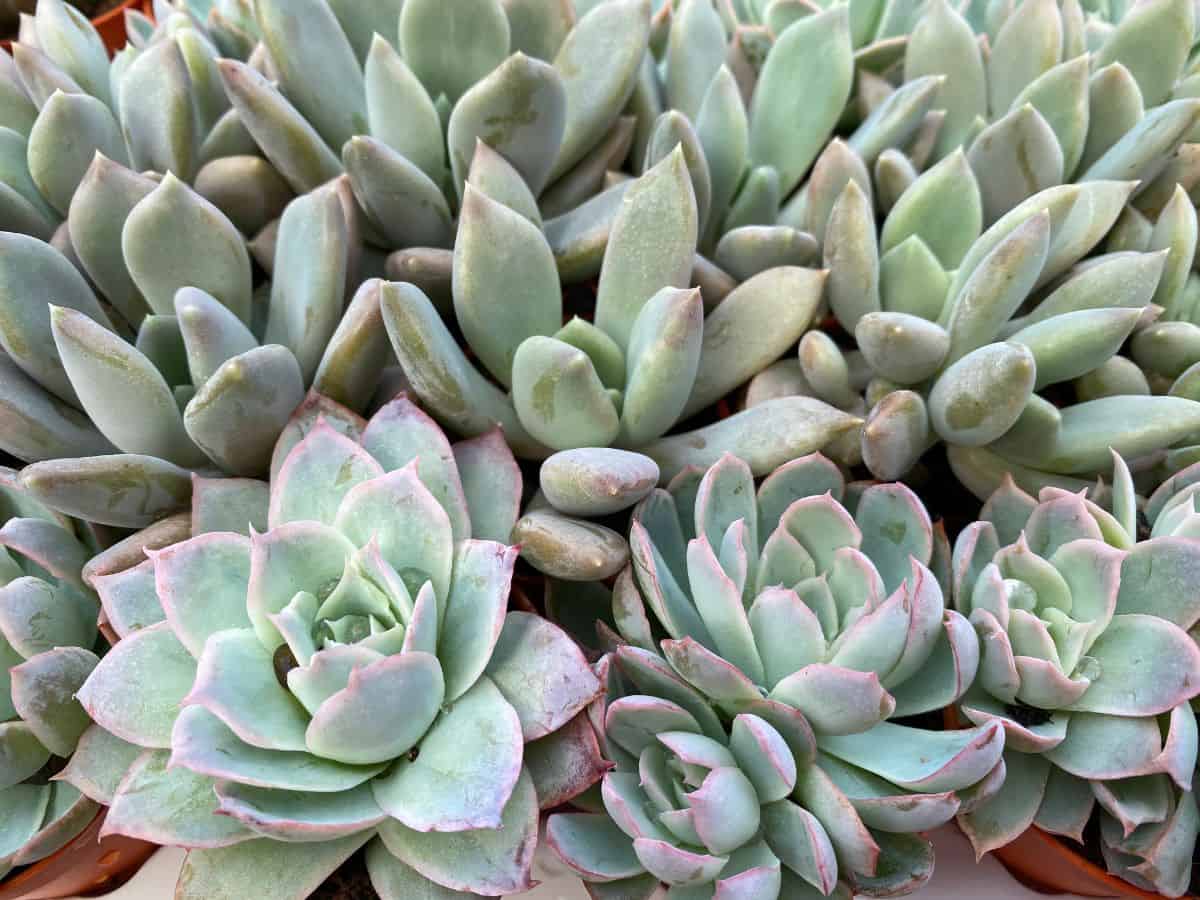
Buy it from:
x Pachyveria are a hybrid between Echeveria and Pachyphytum. They range in color from light green with pink leaf tips to silvery-blue and violet. Their attractive rosettes make them the perfect addition to any garden, indoors or out. Best of all, they are non-toxic.
These hybrid succulents prefer full, direct sun and high heat. They are not frost tolerant and cannot withstand chilly temperatures for extended periods of time. They are able to tolerate poor soil conditions as long as the soil drains well.
7. Lithops
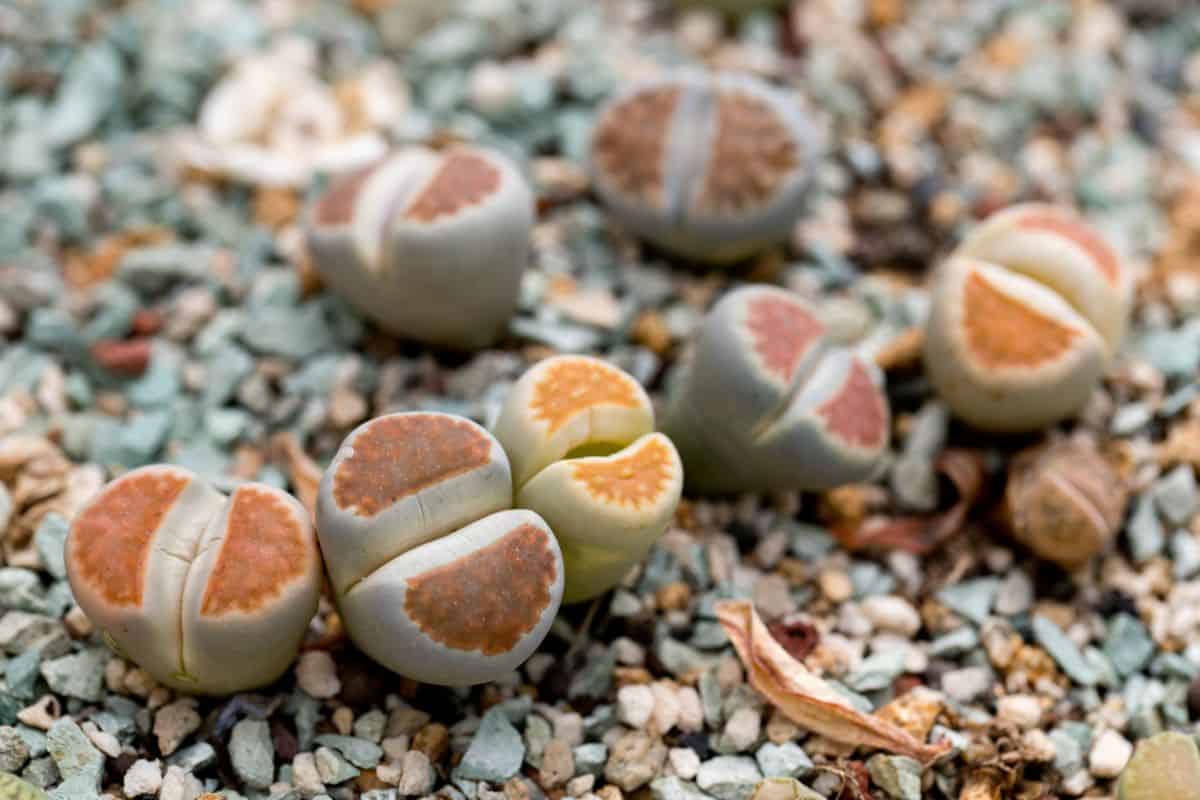
Buy it from:
Lithops are interesting little succulents that are sometimes called 'Living Rocks' because of their round, stone-like appearance. They range in color from pinkish-brown to green and gray. They typically bloom in late summer or early fall and produce white, yellow, orange, or red flowers.
Lithops prefer full sun, but they may need a little shade in especially hot climates. They require very little water, especially in winter. They thrive both indoors and in outdoor gardens. They are not frost tolerant, so they may need to remain indoors during the winter.
Note that if your reptile is especially bitey, this may not be the best choice. A chunk taken out of a Lithops will spell doom for the plant.
8. Sempervivum 'Hens and Chicks'
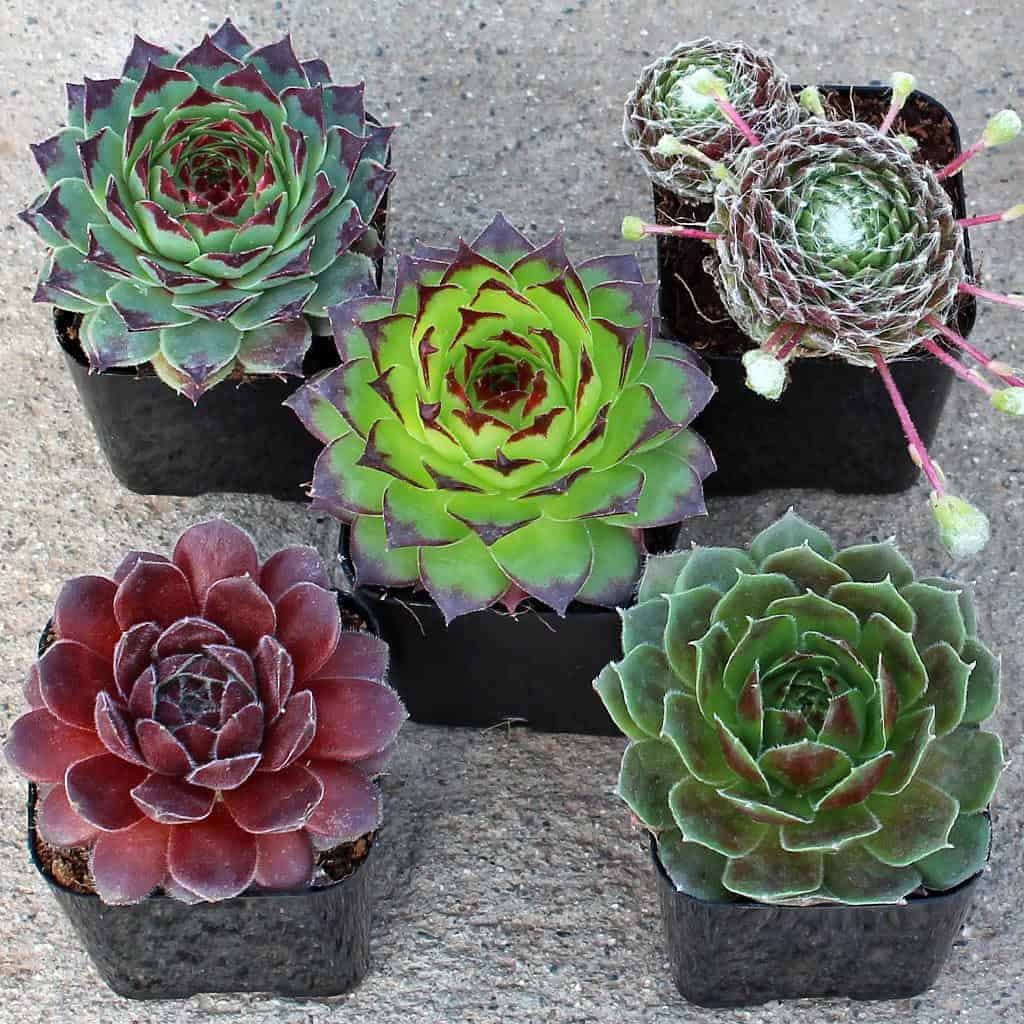
Buy it from:
Sempervivum are one of the most popular families of succulents. They come in a wide range of colors, from bright green to deep red. Their beautiful rosettes make a lovely addition to any succulent collection. In addition to being easy to care for, all members of the Sempervivum family are non-toxic to reptiles.
These adorable succulents prefer filtered light or shade and will thrive either indoors or in an outdoor garden. They do well in a wide range of temperatures and are resistant to frost. Sempervivum are also incredibly easy to propagate, and will spread out by themselves over time.
9. Opuntia 'Prickly Pear'
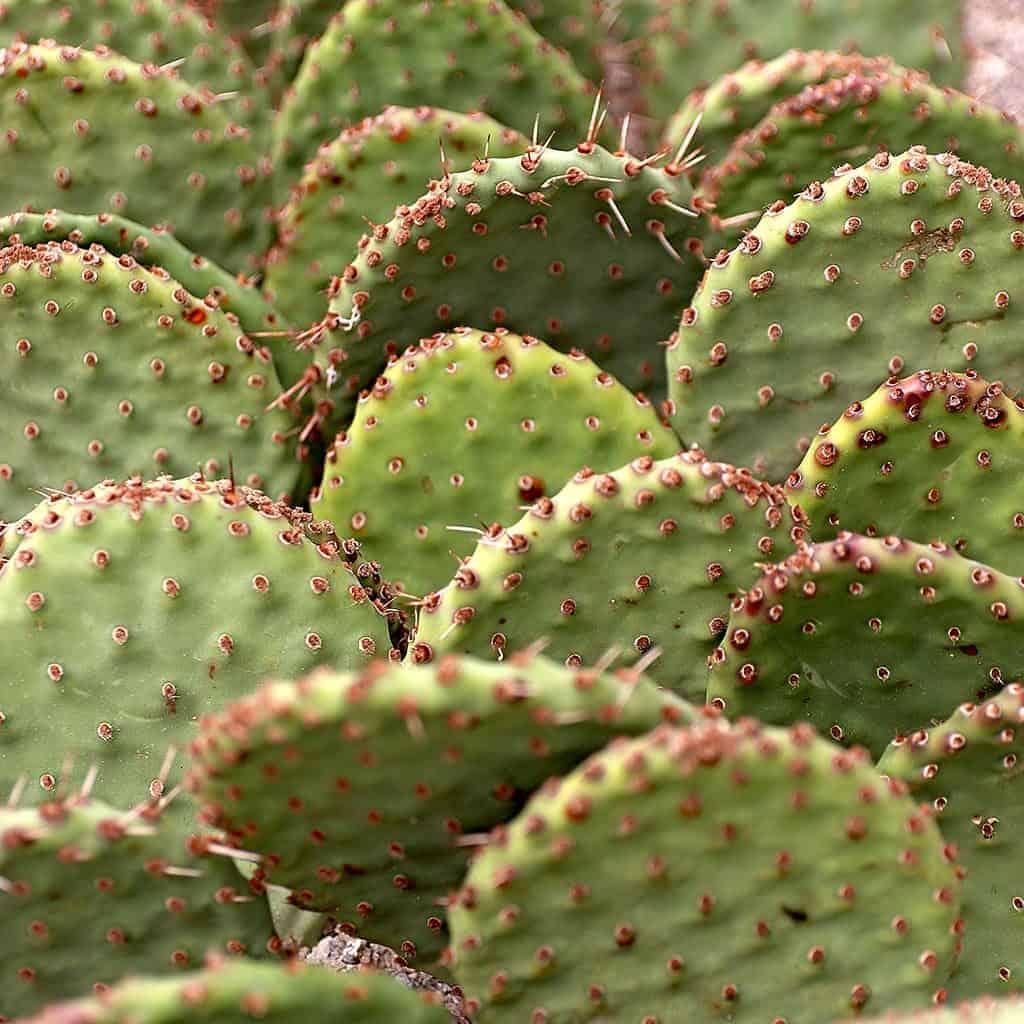
Buy it from:
Opuntia are more commonly known as the Prickly Pear cactus. They have wide, flat pads that are covered in spines. These pads, which come in either red or green, are completely edible once the spines are removed. The fruit of the Prickly Pear is also edible and can be green, red, or orange. Various species can grow quite large or stay small, so look for the latter in your vivariums. Also check the type of spines before purchasing - some might be dangerous to reptiles, while others will be harmless.
Opuntia prefer full sun with well-draining soil. They thrive on very little water and can be propagated from pad cuttings. If grown from seeds, they can take 3 to 4 years to fully mature and produce fruit.
10. Hylocereus 'Dragon Fruit'
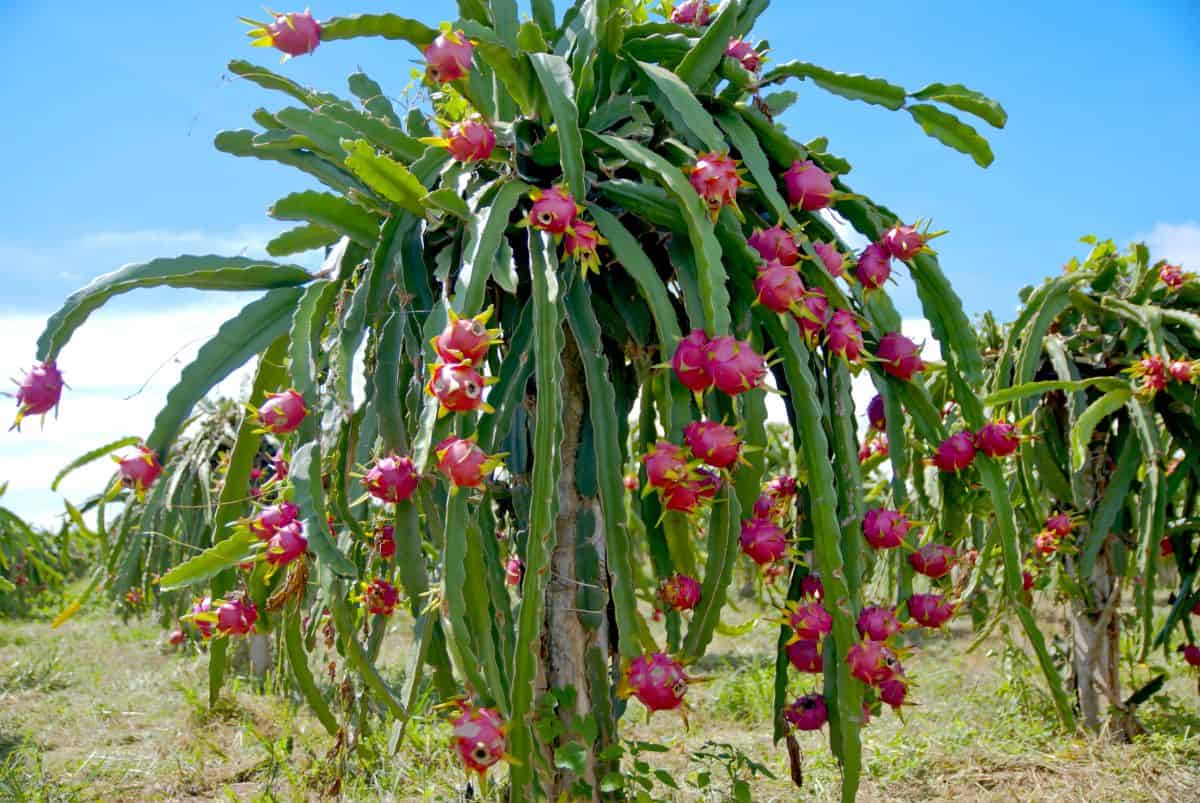
Buy it from:
This night-blooming cactus has long stems that can grow up to 16.5 feet in length. The blooms of Hylocereus plants are some of the largest in the world. There are three different varieties that differ only in the color of the fruit. The edible fruit has a yellow or red spiky shell with either white or red flesh.
Dragon fruit plants are hardy to just below freezing and prefer full sun. They can grow to be quite large, so make sure you have an appropriate size pot, or be prepared to prune regularly. They also prefer to climb with their long stems, so they require sturdy support.
11. Sedum morganianum 'Burro’s Tail'
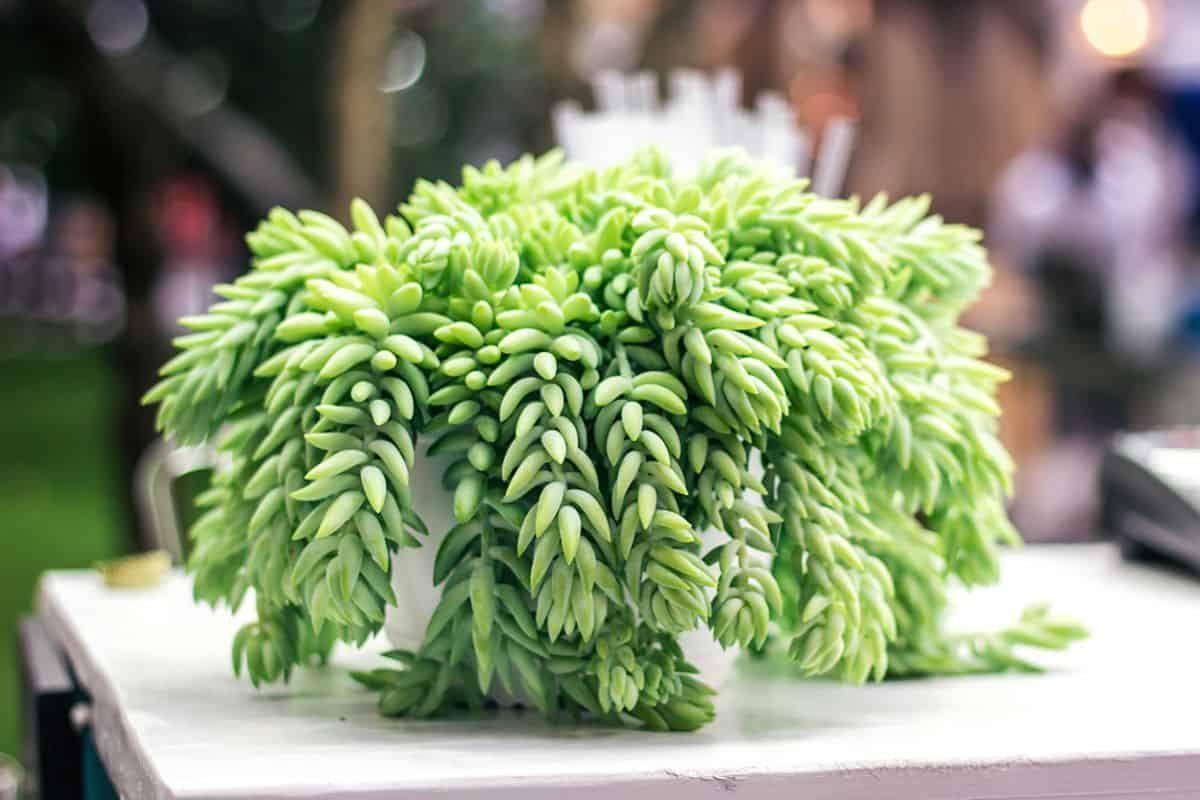
Buy it from:
Sedum morganianum, or Burro’s Tail is a trailing succulent that looks great in both gardens and planters. It’s a great addition to any succulent collection or reptile home. Its long stems and short, thick leaves make it stand out in any crowd. Burro’s Tail are typically a silvery green color, though some may have a yellowish tinge.
Burro’s Tail prefer partial sun if planted outdoors and bright light if kept indoors. Be careful when planting outdoors as full sun can burn the plant and it is quite sensitive to frost. This unique succulent can be propagated with either the stems or individual leaves.
None of these plants are toxic to reptiles, but overeating of succulents isn't great for their diet. It may cause digestive issues. Be sure to double check a specific species of succulent's toxicity before adding to your reptile's enclosure. Happy herping!

